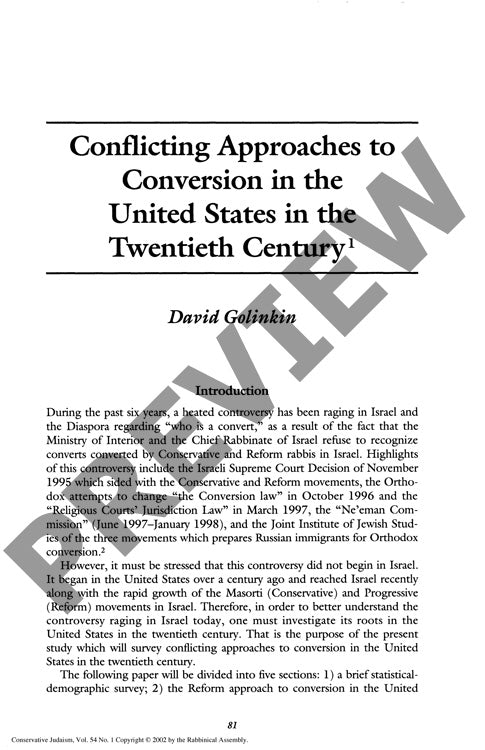Conflicting Approaches to Conversion In
Couldn't load pickup availability
The battle over Jewish conversion standards has created deep rifts between American Jewish denominations that continue to shape religious politics in Israel today. Throughout the twentieth century, Reform, Conservative, and Orthodox movements developed sharply divergent approaches to accepting converts, particularly regarding ritual requirements and rabbinic authority. Through analysis of denominational documents, responsa literature, and demographic surveys examining conversion-intermarriage patterns, four pivotal developments emerged in Reform practice: the 1892 abolishment of circumcision and immersion requirements, subsequent gradual reintroduction of traditional rituals, and the controversial 1983 patrilineal descent resolution. Conservative Judaism maintained consistent halakhic requirements including study, circumcision/immersion, acceptance of commandments, and bet din oversight, while exhibiting ambivalence toward Reform conversions. Orthodox responses varied significantly, with strict authorities rejecting non-Orthodox conversions entirely and lenient voices accepting technically proper conversions regardless of rabbinic affiliation. Approximately 180,000 American Jews are converts, with most conversions responding to intermarriage rather than purely religious motivation. These denominational conflicts over conversion standards have created fundamental divisions within American Judaism that subsequently influenced Israeli religious politics, emphasizing the need for compromise among movements to preserve Jewish unity while maintaining halakhic integrity.

More Information
-
Physical Description
-
Publication Information
Published
ISBN
-
Publication Credits
David Golinkin

